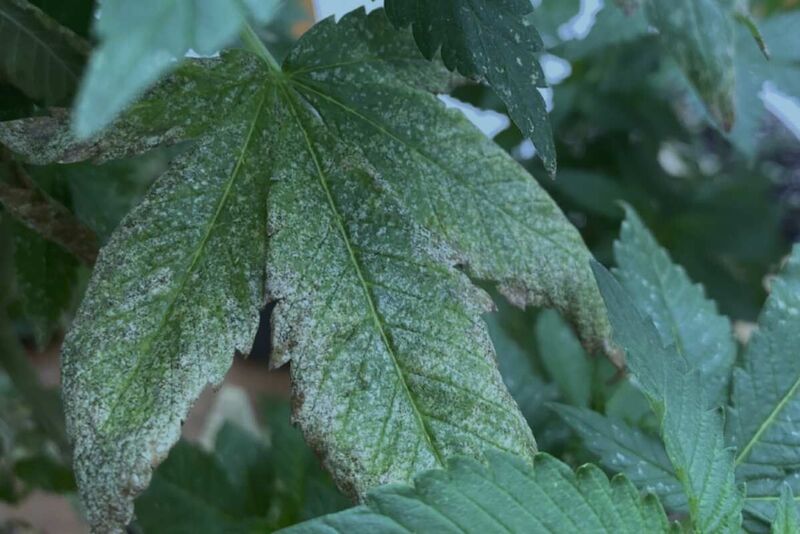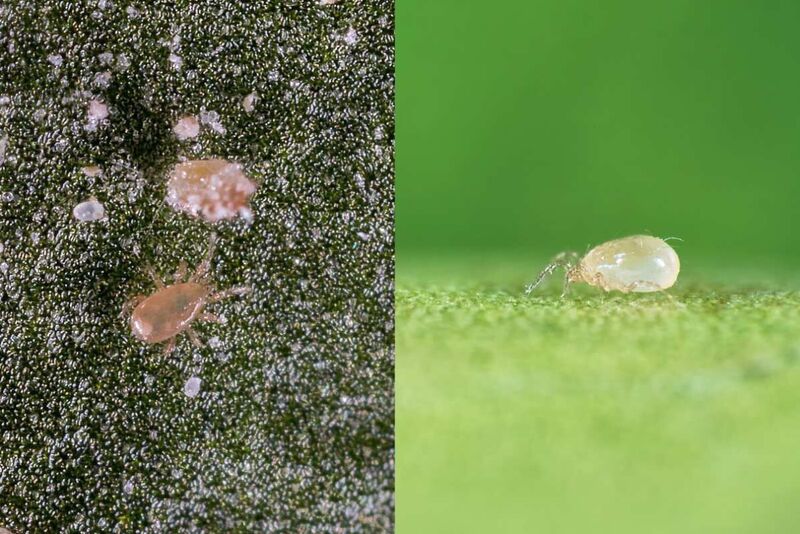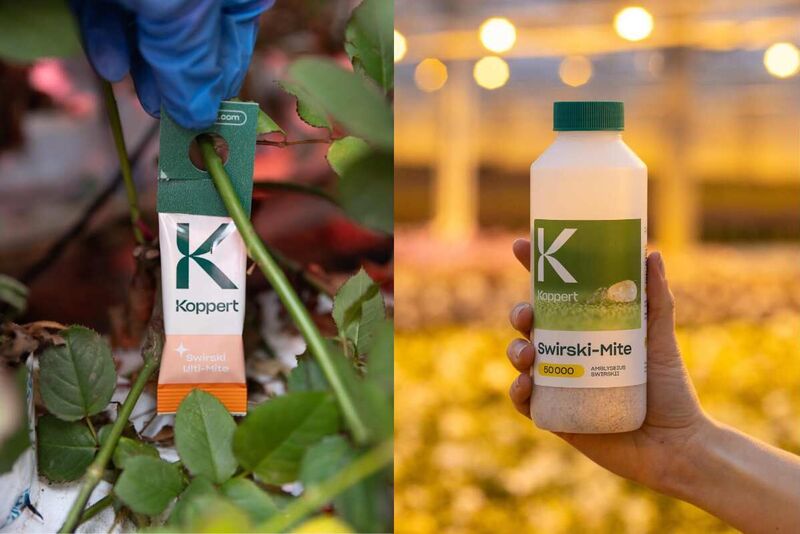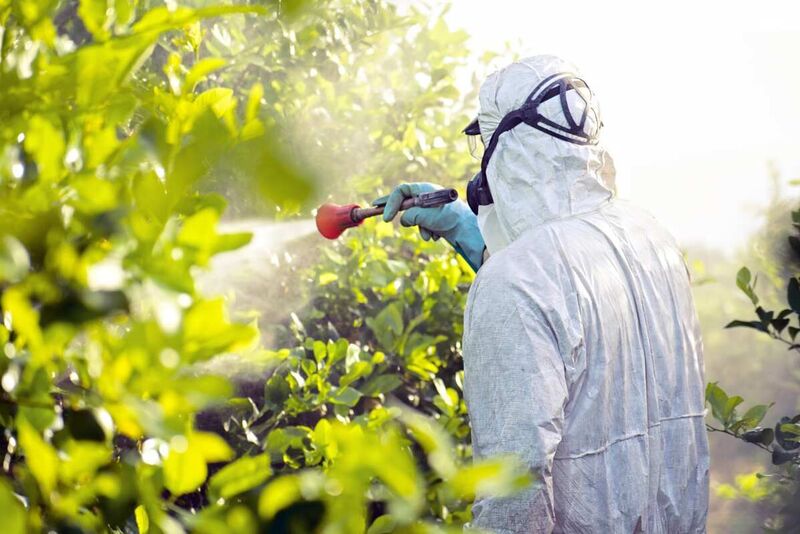Thrips have an extensive host range and are always posing a threat due to constant pressure on other nearby vegetation surrounding your facility (i.e. - outdoor field crops, vegetable garden, cut flower garden, etc.), making them quite easy to get. They’ll damage numerous plant varieties through leaf stippling, egg laying, and depositing black fecal matter on leaves. These activities reduce photosynthesis and cause scarring, leading to deformed growth as leaves or flowers develop. Additionally, thrips are primary vectors for plant viruses like TSWV (Tomato Spotted Wilt Virus) and INSV (Impatiens Necrotic Spot Virus), inflicting severe damage on certain crops.
The primary thrips species found in Canadian crops are Western Flower Thrips (Frankliniella occidentalis), Onion Thrips (Thrips tabaci) and European Flower Thrips (Frankliniella intonsa) all of which can be controlled by predatory mites. The primary predatory mites for the control of thrips are Swirski (Amblyseiulus swirskii), Thripex (Neoseiulus cucumeris), Anso-Mite (Amblyseius andersoni), and Limonica (Amblydromalus limonicus). But, how do you know which is the best thrips predatory mite for your situation?

First, what are predatory mites?
Predatory mites are tiny mites. Typically, just barely visible with the bare eye. They live on crop leaves and/or soil where they hunt crop pests; some species act as a natural thrips control. For this article, we will focus on the most common two predatory mites that are sold for thrips control in Canada - Swirski (Amblyseiulus swirskii) and Thripex (Neoseiulus cucumeris). Both are generalist predators (feed on multiple pests, pollen, and spores) with a long-proven track record as thrips predators in Canada.
One of the most important things to keep in mind when using predatory mites for thrips control is that they primarily feed on the first larval stage of thrips. These are tiny beige coloured larvae that hatch from the egg in the leaf or flower. This is key to understand as the later stages of the thrips life cycle (older instars and adults) need to be controlled by other means such as Thripor (Orius insidiosus) or Horiver sticky cards.
For more information on how to eradicate thrips completely read here: Using Predator Mites, but still having Thrips issues?

Difference Between Swirski and Thripex:
Swirski and Thripex are similar at a quick glance. Both eat roughly the same number of thrips larvae per day and have similar life cycles, where they differ is how quickly they can reproduce in your crop, based on temperature range and escalating pest pressure. For most crops Swirski outperforms Thripex, as it does better under regular crop temperatures (22C-35C (72F-95F)) and responds quicker to increasing pest pressure by laying more eggs in the crop than Thripex.
Some crops (primarily ornamentals) are not conducive to predatory mite reproduction because they lack the type of plant hairs needed for the predator mite to deposit its eggs. In these situations, Thripex is a better choice as there is no value to Swirski’s higher level of reproduction, and Thripex has a lower cost per mite.
Note: Only place one generalist predatory mite in your crop at a time. Swirski and Thripex are known to predate on each other at the expense of thrips control so mixing these products is not advised.

What product should you purchase (Bottles or Sachets)?
When looking into several types of Swirski or Thripex products it is good to keep in mind that while sachets typically last 3-4 weeks, loose material (bottles) need to be re-applied weekly or bi-weekly. When choosing between these two types of products, look at your climate conditions and what type of crop you are growing.
Sachets are often the best choice in crops like cannabis or houseplants because they are clean, easy to apply and provide the mites buffer against the low humidity climate (<50%) often found in indoor situations. They are also used when greenhouse vegetable crops are newly planted in a facility, right as the leaves begin to touch.
For more information on the type of sachet you should purchase read here: Plus, Ulti-Mite or LD. Which Sachet is Best for You?
Loose products are more commonly used in weekly curative ornamental treatments or as a quick boost in crops where sachets are already present (i.e. - greenhouse vegetables).
For more information on Bottles vs. Sachets read here: Predatory Mite - Should I Order Bottles or Sachets?

Are they better than sprays?
Predatory mites are often more effective than pesticide sprays. They work actively against thrips larva and eggs you are unable to see, since they can squeeze into small crevices pesticide sprays are unable to reach. Sprays also need to be applied multiple times for proper efficacy. Pests often develop resistance to multiple spray applications, so the sprays eventually become ineffective. Changing to biocontrol is a more natural and safe way to remove unwanted pests from your crop.

Conclusion
Introducing predatory mites into your crop will provide you with long lasting natural thrips control and help decrease the possibility of a large infestation from developing. Remember, thrips pose a significant threat to a wide range of plant species throughout Canada, but their populations can be managed effectively using predatory mites. You just need to understand the differences between Swirski and Thripex and when to use bottles or sachets.
While both predator mites and product options are effective, their reproductive rates and adaptability to different environments vary. And of course, compared to pesticide sprays, predatory mites provide a more sustainable and long-term solution to thrips control. They can access hidden thrips larvae and eggs, ensuring thorough pest management without the risk of pesticide resistance. Embracing biological controls like predatory mites not only safeguards crop health but also promotes environmentally friendly farming practices, aligning with the growing demand for sustainable agriculture.